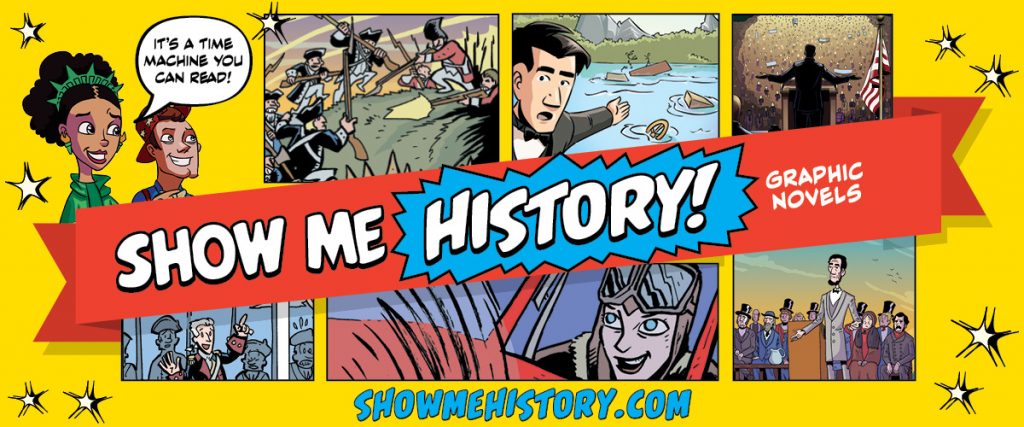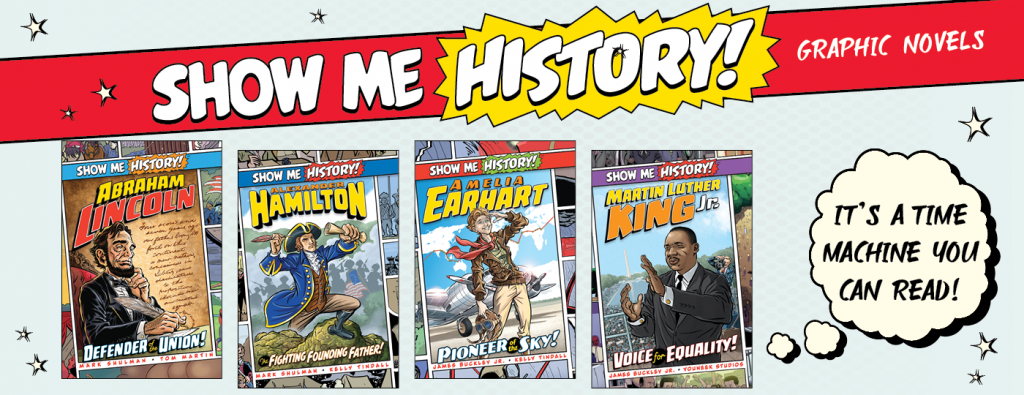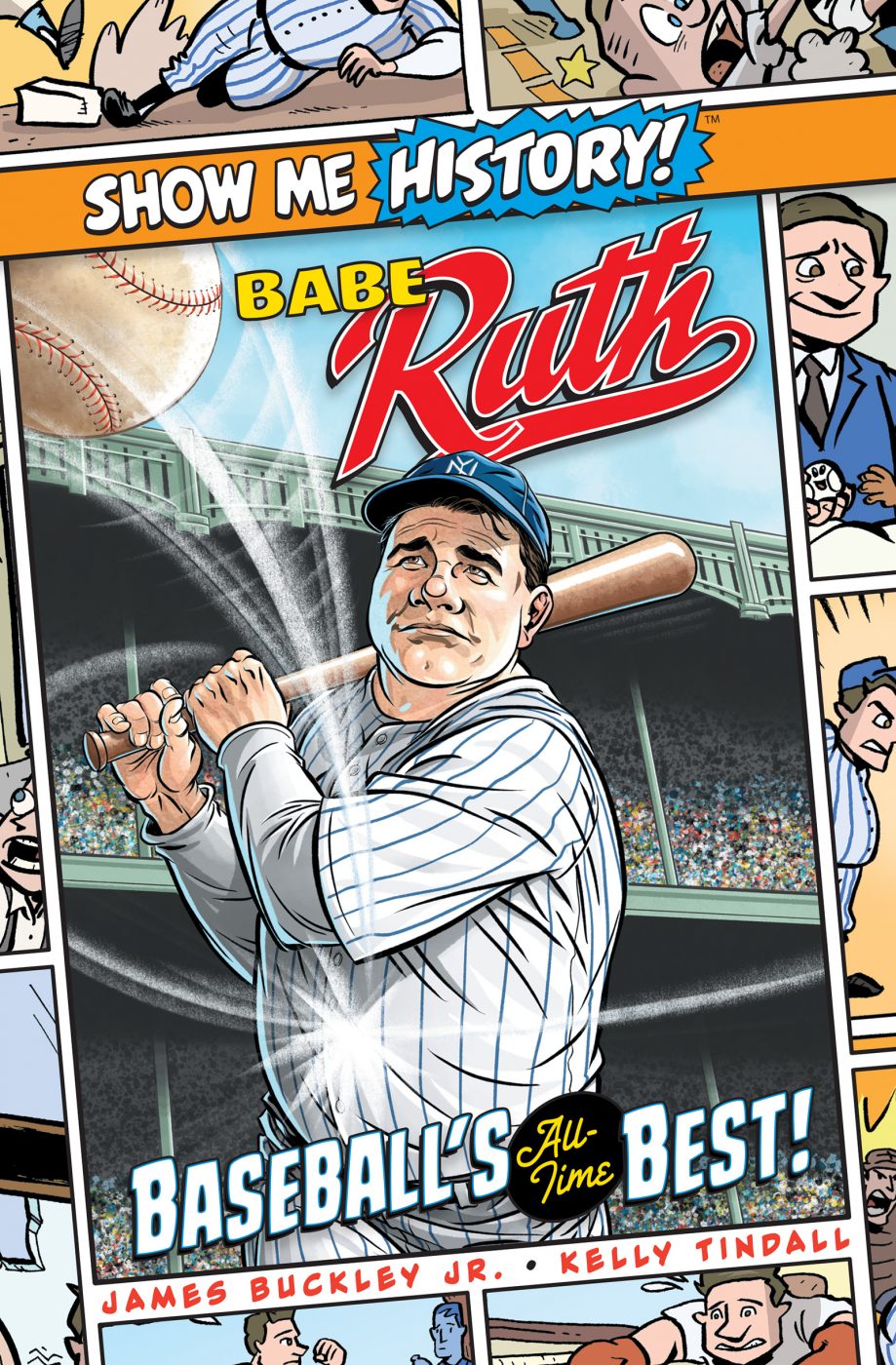For years, Portable Press has brought you fantastic nonfiction books, but recently we decided to take a whole new approach. Introducing Show Me History!, biographies of famous, notable, and important people presented in the graphic novel format. What’s a graphic novel? It’s kind of like a really long comic book. Here’s a bit more about the illustration history of this literary format.

- While publishers have been binding up comic book series into anthologies for decades, comics historian Richard Kyle coined the phrase “graphic novel” in 1964 to differentiate between comic books. “Graphic” means that the story is told through pictures,” and “novel” indicates that it’s a long, novel-length, or novelistic story. It was first widely used to describe A Contract with God and Other Tenement Stories, a long work by comics legend Will Eisner about a family of immigrants living in a New York tenement building.
- In 1986, cartoonist Art Spiegelman veered away from the gross humor of his most famous work, the Garbage Pail Kids trading card series, and released the first part of Maus, a two-book epic graphic novel based on his father’s recollections of being a Polish Jew during World War II and surviving the Holocaust. Jewish people are depicted as mice, and Nazis as cats. After the release of Maus II a few years later, it became the first graphic novel to win the Pulitzer Prize for Literature.
Babe Ruth: Baseball’s All-Time Best! tells the story of Ruth’s life in graphic novel format—from his humble beginnings in Baltimore to superstardom with the New York Yankees. Baseball fans of all ages will be entertained and educated by the illustrations and historically accurate narrative of this graphical biography.
- Depictions of Batman used to be campy (like the ‘60s TV series starring Adam West) or of the corny, superhero comic ilk. Today, Batman is a tortured soul who populates movies pitch-black, both tonally and literally. That approach stems directly from two graphic novels that reimagined the Batman mythos: Frank Miller’s moody, bleak, and violent The Dark Knight Returns (1986), and Alan Moore’s The Killing Joke (1988), which created a dark, mental illness-oriented origin story for the Joker.
- In 2006, cartoonist Alison Bechdel published Fun Home: A Family Tragicomic. It’s a full-length memoir, but told in the form of sequential art, about her unique and troubled childhood, which included growing up in her family’s funeral home and dealing with the suicide of her father. Comics and tragedy aren’t the most obvious inspirations for Broadway, but in 2015, the musical adaptation of Fun Home hit Broadway, later winning the Tony Award for Best Musical.










